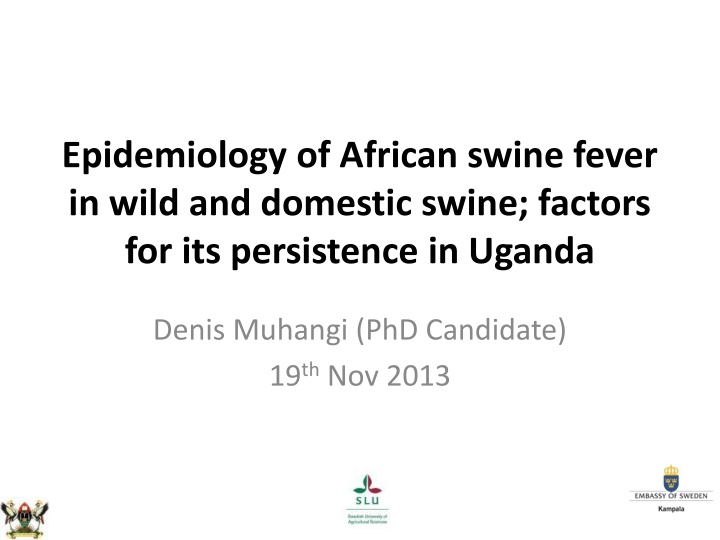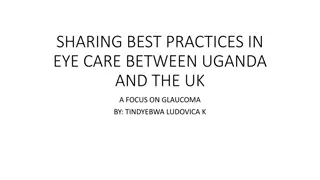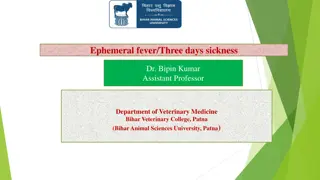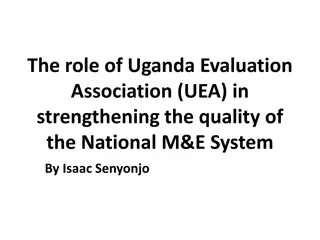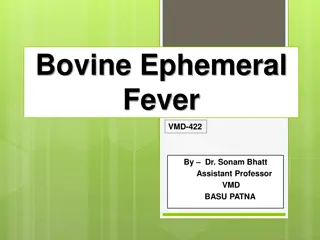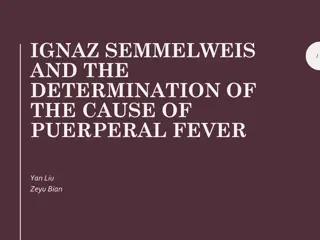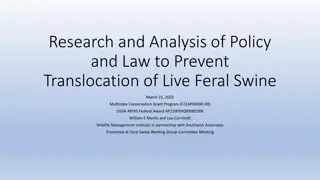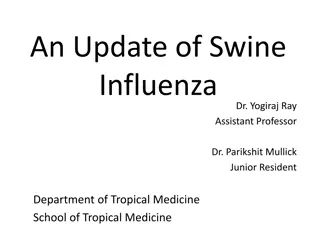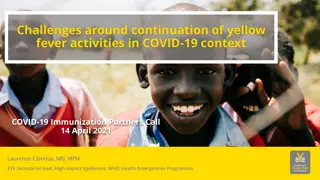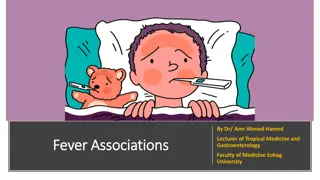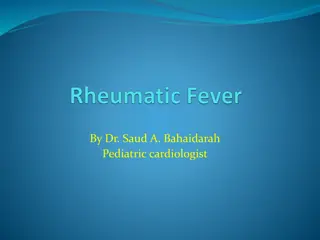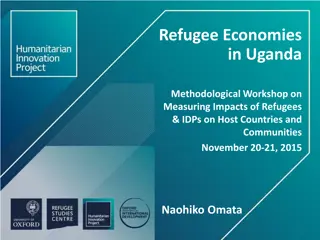Epidemiology of African Swine Fever in Uganda: Insights and Challenges
African Swine Fever (ASF), caused by a large DNA virus, poses a significant threat to domestic pig populations in Uganda. Factors influencing its persistence include high mortality rates, absence of vaccines or treatments, and its endemic nature in Sub-Saharan Africa (SSA). Research aims to understand transmission dynamics, risk factors along the value chain, and the role of wildlife in the spread of ASF. Findings highlight key insights on disease transmission, risk factors, and challenges faced in controlling ASF in Uganda.
Download Presentation

Please find below an Image/Link to download the presentation.
The content on the website is provided AS IS for your information and personal use only. It may not be sold, licensed, or shared on other websites without obtaining consent from the author.If you encounter any issues during the download, it is possible that the publisher has removed the file from their server.
You are allowed to download the files provided on this website for personal or commercial use, subject to the condition that they are used lawfully. All files are the property of their respective owners.
The content on the website is provided AS IS for your information and personal use only. It may not be sold, licensed, or shared on other websites without obtaining consent from the author.
E N D
Presentation Transcript
Epidemiology of African swine fever in wild and domestic swine; factors for its persistence in Uganda Denis Muhangi (PhD Candidate) 19thNov 2013
African swine fever (ASF) overview large DNA virus, genus Asfivirus (family Asfarviridae) Up to 22 genotypes OIE listed viral disease Acute, highly contagious in domestic pigs High mortality, reaching 100% No vaccines and no treatment Emerging trans-boundary disease Endemic in large parts of SSA including Uganda Pigs are increasingly becoming a source of income for small holders (poverty reduction) as demand for pork increases. ASF a constraint in development of the pig industry.
Epidemiology Clinical disease_domestic pigs (Pig-pig cycle) Wild boars (Europe) and the Caucasus Sylvatic cycle- Warthogs, soft ticks (Ornithodoros moubata). Other wild suidae- bush pigs, giant forest hogs.
Objectives: Main Objective: Provide information on epidemiology of ASF in Uganda & factors for its persistence. Specific objectives: (1) Investigate the dynamics of transmission of ASF in domestic pig production systems. (2) Investigate the risk factors for ASF along the domestic pig value chain. (3) Assess the role of wildlife (wild pigs and soft-ticks) in transmission of ASF. (4) Assessment of genetic variability of ASF virus isolated from different hosts and places.
Objective 1: Investigating dynamics of transmission of ASF in domestic pig production systems. Study area: Masaka and Rakai Questionnaire survey and blood/serum samples from pigs Findings Risk factors; Feeding swill & getting replacement stock from other farms High incidence rate (14.1/100pig farm years) No evidence of long-term domestic pig carriers.
Objective 2: Investigate the risk factors for ASF along the domestic pig value chain. Study area; Soroti, Tororo, Kabarole, Mityana, Mukono Study population; Pig farmers and pig traders (middlemen, butchers, roast pork restaurants) Findings; Existence of potential risk factors Poor infrastructure and ASF control/prevention mechanisms at district level.
Objective 3: Assess the role of wildlife (wild pigs and soft-ticks) in transmission of ASF. Bush pigs work ELISA for antibodies against soft tick Ornithodoros moubata in sera of domestic and wild pig.
Unit sends GPS positions through GSM every 3 hours, and movements can be monitored online Possible bush pigs-domestic pigs contact??
Tick antibodies analysis Employs recombinant protein TSGP1, a salivary gland protein (Diaz-Martin et al, 2011). Results on inactivated sera at IRNASA, Spain (92 out of 500 samples or 18.4% from pig farms, slaughter slabs, outbreak samples, and wild pigs). High exposure to the soft tick vector.
Objective 4: Assessment of genetic variability of ASF virus isolated from different hosts and places. Bundibugyo-May Moyo- June Lira- Aug Gulu- Aug, Oct, Nov, Dec, Jan Mityana- Oct, Jan, June Mpigi- Nov Soroti- Dec Kalangala- Jan Kampala, Wakiso- Jan, July Kyanamukaka-Feb Bukakata- Feb Masindi March Busia- March
1. Fewer differences among UgASF across time and space 2. More differences btn Ug and the rest
Acknowledgements Supervisors; Makerere; Prof. OCAIDO Michael (Ph.D) SLU/SVA; Dr. STAHL Karl (Ph.D) Dr. MASEMBE Charles (Ph.D) Prof. BERG Mikael (Ph.D)
